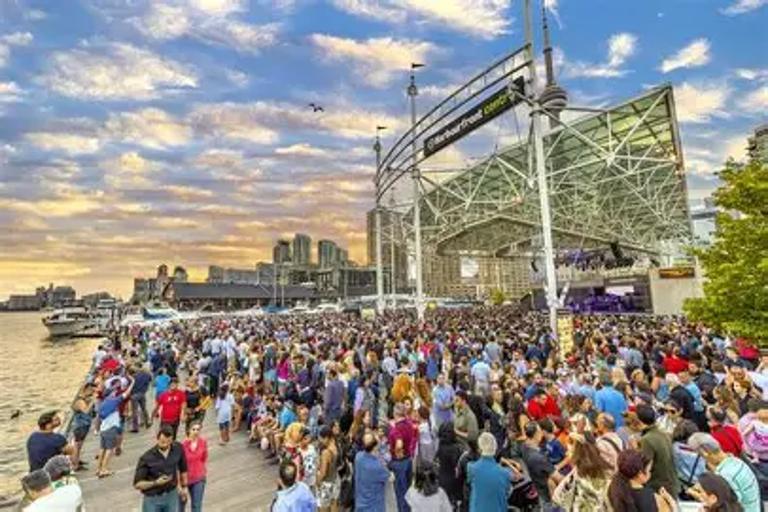Events & Festivals
Harbourfront Jazz Festival Draws Record Crowds
Thousands gathered by the lake to enjoy performances from Canadian and international jazz artists.
June 24, 2025 at 04:25 — By By Horizon Tribune Editorial Team

The Harbourfront Jazz Festival returned to Toronto this past weekend with its largest crowd in years, drawing thousands of music lovers to the waterfront for three days of live performances, workshops, and cultural programming. Sunny weather and a diverse lineup made for a perfect atmosphere along Lake Ontario.
Organized by the Toronto Centre for the Arts and several community partners, the festival featured over 50 acts across four stages, showcasing both Canadian talent and international jazz luminaries. From soulful saxophone solos to genre-bending fusions, audiences were treated to a broad spectrum of sounds and styles.
Among the headliners was acclaimed pianist and composer Lorraine Kingsley, whose Saturday night performance drew a standing ovation from an audience of over 4,000 at the main stage. Other highlights included Afro-Cuban jazz ensemble Los Bravos and a special tribute to Canadian jazz icon Oscar Peterson.
Food trucks lined the promenade, offering everything from jerk chicken to vegan bánh mì, while local artisans set up booths selling handmade jewelry, artwork, and vintage vinyl. Organizers said they made a conscious effort to include more BIPOC-owned vendors this year.
New to the festival this year was a Youth Jazz Lab, where high school musicians participated in clinics led by professional performers. The program culminated in a lively showcase concert that drew cheers from families and seasoned festival-goers alike.
Festival director Adrian Bell said the turnout exceeded expectations. “After a couple of tough years due to the pandemic, we weren’t sure what to expect. But people showed up — in a big way. There’s a real appetite for live music again, especially in beautiful outdoor spaces.”
Attendees came from across the GTA and beyond, with some visitors traveling from Ottawa, Montreal, and even New York. Tourism Toronto estimates the festival brought in over $2 million in economic activity through hotel stays, dining, and retail shopping.
Beyond music, the festival offered a series of panel discussions on the cultural and political dimensions of jazz, including its roots in Black resistance and its evolving global expressions. These sessions drew packed crowds at the Power Plant Contemporary Art Gallery.
Accessibility was also a major focus. Organizers added ASL interpretation at the main stage, provided wheelchair-accessible seating, and offered free earplugs for those sensitive to loud sounds. The festival’s app included real-time schedules, venue maps, and artist bios to help attendees navigate the event.
Volunteers played a key role in the festival’s success. Over 200 individuals helped with setup, crowd guidance, and artist hospitality. “It’s more than a music event — it’s a community effort,” said Bell.
The festival also partnered with local nonprofits to distribute free tickets to underserved communities. Youth from St. James Town and Regent Park had the opportunity to attend performances and meet artists backstage through a mentorship program.
Looking ahead, organizers hope to secure more permanent funding from the city and expand programming year-round. Bell hinted at a possible winter jazz series and collaborations with local schools and music conservatories.
For now, as the final notes echoed across the lake, the Harbourfront Jazz Festival left behind memories of shared rhythm, sunshine, and the power of music to bring people together — one note at a time.